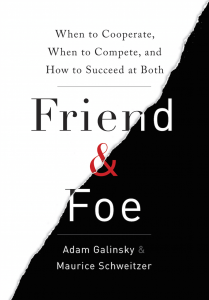Better Living Through Social Science Research
By Jonathan A. Knee
Academic work in the social sciences often elicits puzzlement from those outside the scholarly realm. Even after one cuts through the layers of technical jargon, the nature of the questions asked can be mystifying.
On the one hand, the lengths to which researchers go to “prove” propositions that seem intuitively obvious to a layman are perplexing. On the other hand, the topics pursued can be so narrow as to be of little apparent use in any complex, real-life situation. More broadly, the entire approach often seems intended to avoid attracting any possible general interest.
This phenomenon is explained partly by the fact that success in academia is achieved by persuading a technical audience of your bona fides, not a general one of your relevance. Indeed, excessive preoccupation with the popular media or practical applications can be viewed as a disqualifying lack of seriousness in an aspiring academic. Distinguished academics toward the end of their careers will sometimes try to produce a more accessible description of their chosen field. More often than not, however, they appear by then to have lost the ability to communicate effectively outside of their professional sphere.
Accordingly, it is usually left to particularly insightful journalists like Malcolm Gladwell to translate these fields of inquiry into a language meaningful to the public. The success of a blockbuster like “Freakonomics,” written by a recognized but relatively young academic, is the exception that proves the rule – and in that case was written with a journalist.
Against this backdrop, “Friend & Foe: When to Cooperate, When to Compete, and How to Succeed at Both” (Crown Business: 2015) is unusual on a number of levels. Both of the authors, Adam Galinsky (whom I know only by reputation through our mutual affiliation with Columbia Business School) and Maurice Schweitzer, are highly regarded professors still in their 40s who have already produced hundreds of scholarly publications between them.
Although business school academics are more likely than others to produce general interest books, these tend to focus exclusively on management subjects. “Friend & Foe,” by contrast, bills itself as broadly offering “a set of tools” to help “navigate the shifting sands of our social world.”
Specifically, Professors Galinsky and Schweitzer try to synthesize the implications of the most recent decades of social science research – both their own and others’ – to explain how to manage most effectively the key recurring interactions that characterize our professional and personal lives.
The fresh practical insights of “Friend & Foe” underscore the potential benefits of disseminating research results beyond the ivory tower. On a range of topics like gender differences in mathematical aptitude and the best strategy in making the first offer, well-established and frequently replicated results have not made much of a dent in common misconceptions. “Friend & Foe” highlights that this applies not just to conventional wisdom but to the views of professionals who should know better and risk their livelihoods by remaining ignorant.
Lawrence H. Summers, one of the most distinguished economists of his generation, would very likely still be president of Harvard if he had bothered to examine the research demonstrating that gender differences –whether reflected in math SAT results or the likelihood to ask for a raise – overwhelmingly reflect differences in power, not aptitude.
Source: Better Living Through Social Science Research




